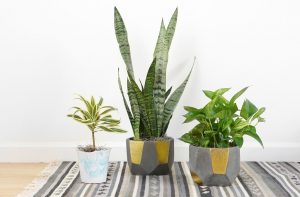 With everybody being at home more than usual this year, houseplants have really been seeing an increase in popularity. There are many studies that have shown that having houseplants in your living and working space can increase your mental wellbeing and productivity. Houseplants have also been shown to clean the air in your home, and if you needed more benefits, they are a great option to freshen up the design of an outdated room.
With everybody being at home more than usual this year, houseplants have really been seeing an increase in popularity. There are many studies that have shown that having houseplants in your living and working space can increase your mental wellbeing and productivity. Houseplants have also been shown to clean the air in your home, and if you needed more benefits, they are a great option to freshen up the design of an outdated room.
Why not try out a new houseplant or two this winter! Don’t want to leave the house? Great news, there are a lot of options for purchasing houseplants online. Once you choose your new plant companion, check out these tips on caring for it:
Watering is one of the trickiest things to figure out. Definitely research your specific plant but the majority of houseplants want to dry out a bit between waterings. Stick your finger in the soil, and when it feels dry down to your first knuckle, give it a deep watering. Over watering will usually kill a houseplant before under watering will, so err on the side of dryness.
Light is something that really depends on the plant. Some plants, like pothos, can thrive in very low light but others, like an umbrella tree need a higher light area. There is also a difference between direct and indirect light. Direct light is when the rays of the sun are directly hitting your plant. Indirect light can still be bright. Do some research or contact the Extension office to find out your plants needs before choosing where to place it.
Some houseplants can live in the same pot for decades, and they will need fertilizer to regenerate the nutrients in the soil. Choose a fertilizer that is labeled for houseplants and follow the indoor plant instructions on the label. Most plants will only want to be fertilized during the growing season.
Some houseplants will need pruned from time to time. If you have a friend with houseplants in need of a trim, this is a great and free way to start your collection. Cuttings taken from a plant can be placed in water or soil to grow a new plant. Cut just below the node on a stem, and remove the lower leaves. You may need to increase the humidity around the cutting by placing a plastic bag over it for a while.
I hope you find your perfect houseplant match this winter!


